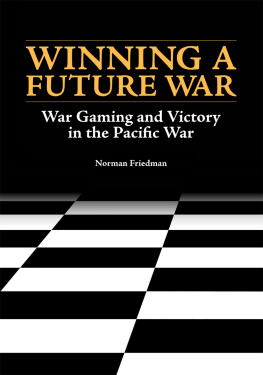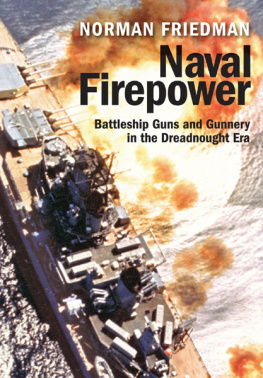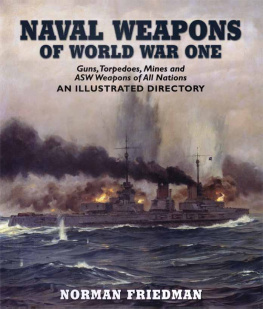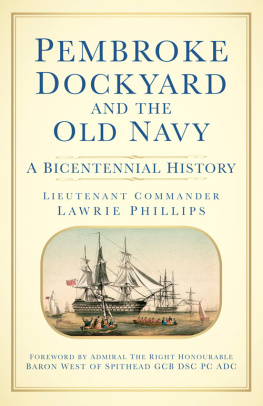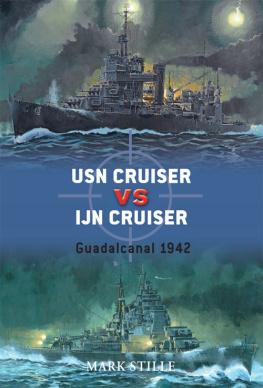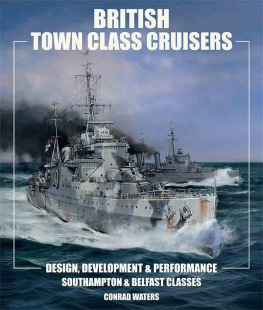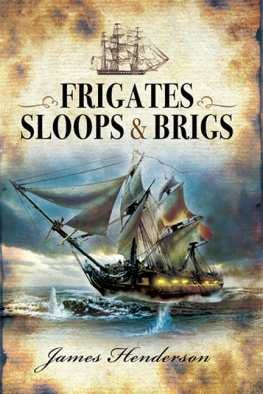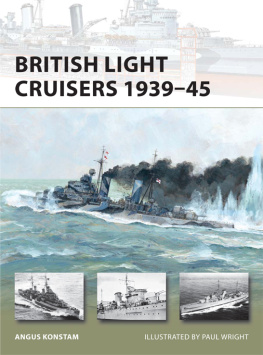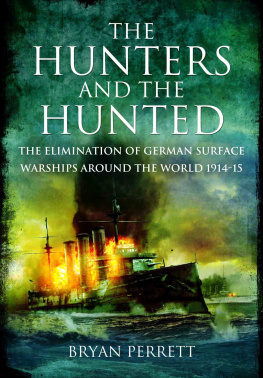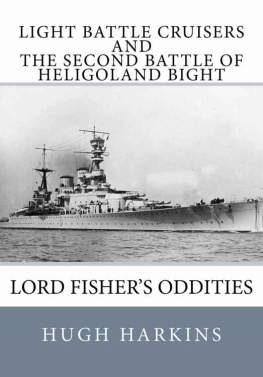Norman Friedman - British Cruisers of the Victorian Era
Here you can read online Norman Friedman - British Cruisers of the Victorian Era full text of the book (entire story) in english for free. Download pdf and epub, get meaning, cover and reviews about this ebook. year: 2012, publisher: Naval Institute Press, genre: History. Description of the work, (preface) as well as reviews are available. Best literature library LitArk.com created for fans of good reading and offers a wide selection of genres:
Romance novel
Science fiction
Adventure
Detective
Science
History
Home and family
Prose
Art
Politics
Computer
Non-fiction
Religion
Business
Children
Humor
Choose a favorite category and find really read worthwhile books. Enjoy immersion in the world of imagination, feel the emotions of the characters or learn something new for yourself, make an fascinating discovery.
- Book:British Cruisers of the Victorian Era
- Author:
- Publisher:Naval Institute Press
- Genre:
- Year:2012
- Rating:5 / 5
- Favourites:Add to favourites
- Your mark:
- 100
- 1
- 2
- 3
- 4
- 5
British Cruisers of the Victorian Era: summary, description and annotation
We offer to read an annotation, description, summary or preface (depends on what the author of the book "British Cruisers of the Victorian Era" wrote himself). If you haven't found the necessary information about the book — write in the comments, we will try to find it.
British Cruisers of the Victorian Era — read online for free the complete book (whole text) full work
Below is the text of the book, divided by pages. System saving the place of the last page read, allows you to conveniently read the book "British Cruisers of the Victorian Era" online for free, without having to search again every time where you left off. Put a bookmark, and you can go to the page where you finished reading at any time.
Font size:
Interval:
Bookmark:
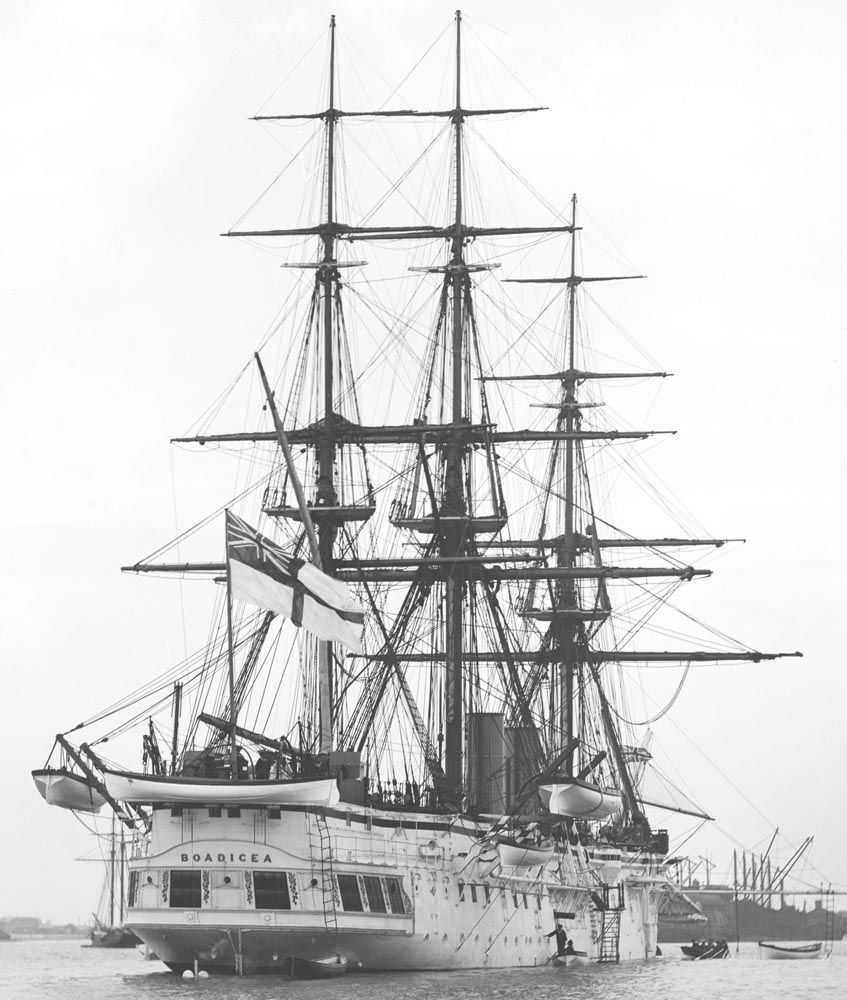
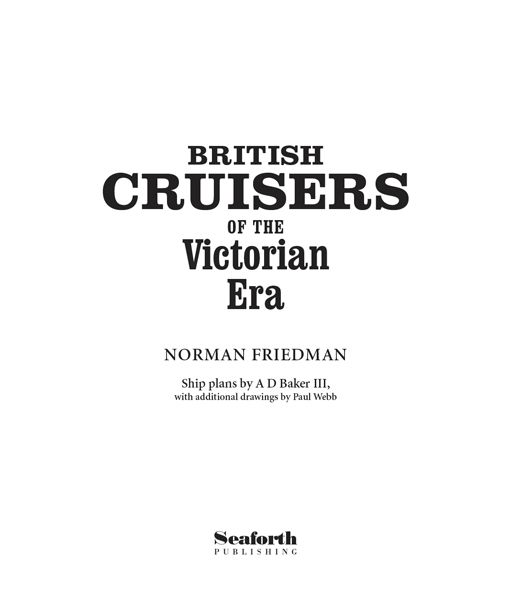
To absent friends:
Antony Preston, David Lyon, and David Topliss
Frontispiece: HMS Boadicea as refitted and rearmed in 1888. A closed embrasure for an aftfiring gun is visible above her false sailing-ship style quarter lights. The charthouse is barely visible just forward of the foot of the mizzen mast.
(NationalMaritimeMuseum G10330)
Copyright Norman Friedman 2012
Plans A D Baker III 2012
(except those on pages 172 and 261 PaulWebb 2012)
First published in Great Britain in 2012 by
Seaforth Publishing
An imprint of Pen & Sword Books Ltd
47 Church Street, Barnsley
S Yorkshire S70 2AS
www.seaforthpublishing.com
Email info@seaforthpublishing.com
British Library Cataloguing in Publication Data
A CIP data record for this book is available from the British Library
ISBN 978 1 84832 099 4
eISBN 9781473812789
All rights reserved. No part of this publication may be reproduced or transmitted in any form or by any means, electronic or mechanical, including photocopying, recording, or any information storage and retrieval system, without prior permission in writing of both the copyright owner and the above publisher.
The right of Norman Friedman to be identified as the author of this work has been asserted in accordance with the Copyright, Designs and Patents Act 1988
Typeset and designed by Roger Daniels
Printed and bound in China by 1010 Printing International Ltd
My wife Rhea made this book possible. She helped me think through some of the key issues concerning dramatic changes in British exposure to trade warfare, which are vital to its thesis. As the scope of this book expanded to embrace the whole Victorian era (and a few years afterwards), I had to go back to various archives again and again, and Rhea encouraged me to do so. I could not have written this book without Rheas loving support and encouragement.
Any project like this book benefits enormously from the help friends can provide. This one particularly benefited as its time scope grew from the late Victorian era (beginning with HMS Iris and Mercury ). Anyone who has worked in the documents of this period will recognize that the extent and quality of documentation declines dramatically for the period before about 1870. For example, no policy documents explain the dramatic cut in cruiser construction in 1863-64. None of the Covers for the big iron frigates appear to have survived (it is as though Edward Reed decamped with all of his design documentation when he stepped down as DNC). I am therefore particularly grateful to those who helped with what documentation has survived. Dr Stephen S Roberts generously provided British material he had collected many years ago for his thesis on French naval development. Professor John Beeler, who is collecting and publishing the Milne papers, provided some key letters. Professor Andrew Lambert, who has specialized in the Victorian Royal Navy, generously provided several papers, one of them unpublished. Chris Wright, editor of Warship International , provided his thesis on the Royal Navy of this period, which greatly helped clarify the policy context. I benefited enormously from a lengthy conversation with Colin Jones and with John Houghton, and the latter generously provided a copy of his book on world navies of the early Victorian period.
For both the early and the later eras, I am grateful to Jeremy Michell and to Andrew Choong of the Brass Foundry outstation of the National Maritime Museum for their enormous help with plans and photos. I am also grateful to Bob Todd, photo curator at the Brass Foundry. For photos held by the US Navy, I would like to thank my friend Charles Haberlein, curator emeritus at the Naval Historical and Heritage Command, and his assistants Ed Finney and Robert Hanshew (who is Mr Haberleins successor). I would like to thank the photo library staff of the US Naval Institute. I am grateful to the State Library of Victoria (Australia), which has made available the superb photography of Allan C Green which it holds. I am also grateful to the staff of the Public Record Office (now called the National Archives) at Kew and to Jennie Wraight, Admiralty Librarian at the Royal Navy Historical Branch in Portsmouth. I would like to thank Dr David Stevens of the Royal Australian Navy Historical Branch and Dr Josef Strazcek, formerly his assistant and an avid photo collector. Both supplied very useful photographs. Stephen McLaughlin very generously provided material on Vickers designs. I can only regret that no comparable record of Armstrong designs seems to have survived. That is particularly unfortunate because Armstrong built the great bulk of the export cruisers of the period covered by this book. I was fortunate to be permitted to use the Vickers collection at Cambridge University Library.
My good friend A D Baker III is listed as illustrator, but he is much more than that. As he painstakingly created drawings of British cruisers, he pointed out their many quirks and the relationships which he could see in the source drawings and photographs. Often they were not evident in other documentation. Mr Baker also kindly provided some of the photographs in this book. Both Mr Baker and I much appreciate the advice and assistance we received from our friend Alan Raven in the course of this project. I would like to thank Paul Webb for the drawings he contributed. I would like to thank Professor Jon Sumida not only for his assistance with this project, but for illuminating, many years ago, the economics of the Royal Navy which for me explained a lot of what is described in this book.
As grateful as I am for the assistance I received, I am of course responsible for the contents of this book, including any errors.
N ORMAN F RIEDMAN
Illustrators Notes
The drawings in this book by myself and by Paul A Webb are based directly on official Admiralty as fitted plans. Copies of the original plans, usually amounting to several sheets for each ship, can be ordered from the National Maritime Museum in Greenwich, England. The NMMs historic Brass Foundry building at the old Woolwich Arsenal houses one of the worlds most extensive collections of ship plans, dating back many centuries into the age of pure sail propulsion. It also has an extensive collection of ship photographs. The expert staff at the Brass Foundry, in particular Andrew Choong Han Lin, has been extremely helpful in selecting and crisply duplicating the plan sets needed for this volume.
Many of the older original plans are now fading and, in some cases, have suffered damage over the past century and more. For some ships, only the basic hull and superstructure sheets have survived. For others, only preliminary plans remain. The actual ships experienced many changes before completion. Usually only one set of plans for one ship of a class survives. Thus the dates of depiction listed for each drawing depended heavily on what was available. As fitted drawings are unusual in showing details not only of the exterior of a ship but also many details of the interior, all on the same sheet. For the period covered by this volume, deck plans often show details of equipment like voice pipes and fire mains that are actually below the deck depicted. Elevations usually do not show the masts beyond a few feet above the decks (in many cases the funnels are also truncated). For most of the ships in this book, rigging and/or sail plans survive, but where they did not, the masting and rigging was deduced from that of the closest contemporary classes and from photographs.
Font size:
Interval:
Bookmark:
Similar books «British Cruisers of the Victorian Era»
Look at similar books to British Cruisers of the Victorian Era. We have selected literature similar in name and meaning in the hope of providing readers with more options to find new, interesting, not yet read works.
Discussion, reviews of the book British Cruisers of the Victorian Era and just readers' own opinions. Leave your comments, write what you think about the work, its meaning or the main characters. Specify what exactly you liked and what you didn't like, and why you think so.


